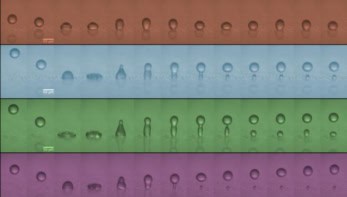By Michael Banks
Proponents of nuclear power in the UK have endured an agonizing wait for Hinckley Point C – a European pressurized water reactor (EPR) to be built in south-west England that would fulfil 3.5% of the UK’s electricity needs. Earlier this year, it looked as if the French utility giant EDF would finally give the project the thumbs up and start construction. However, following months of political wrangling – and resignations by senior EDF executives – a final decision by the EDF board is yet to see the light of day.

Hinckley Point C is not the only EPR under construction that has been beset with delays and cost hikes: two in China, one in France and one in Finland have also had issues. In this first-ever Physics World Focus on Nuclear Energy, we delve into the EPR design and Hinckley Point C, as well as look ahead to other, more ambitious reactor designs in the pipeline – known as generation-IV designs – that could vastly reduce the amount of nuclear waste produced. Although work on such designs has slowed following the 2011 Fukushima nuclear accident in Japan, supporters argue that generation IV will still play a vital role in the long term.
The focus issue is not only devoted to fission, but fusion too. For decades physicists have dreamed of using fusion to generate electricity and, with construction well under way on the ITER fusion tokamak in Cadarache, France, that vision is now getting closer to a reality. But is ITER the only way forward? We explore how several private firms are developing small-scale fusion technologies, while in Germany a novel “stellarator” device has just started up that promises to deliver a “steady state” plasma.
Here is a rundown of what is in the 2016 Focus on Nuclear Energy.
• A nuclear revival – A series of next-generation European pressurized water reactors are set to come online in the next couple of years in China, Finland, France and the UK, Michael Banks finds out more
• Taking the heat – ITER will have to deal with huge quantities of particles that need to be expelled through the tokamak’s “divertor”, as Daniel Clery reports
• Planning a new generation – Edwin Cartlidge discovers how plans are progressing for commercializing six advanced-reactor concepts, known as “generation IV” designs
• An independent endeavour – Small companies are looking at ways to push fusion towards commercialization, as Jon Cartwright explains
• Plotting a carbon-free future – Gene Grecheck, president of the American Nuclear Society, outlines how nuclear power can help deliver climate emission targets
• A stellar fusion device – Michael Allen looks at Wendelstein 7-X, a novel “stellarator” fusion device
All full members of the Institute of Physics received a print edition of the focus issue along with their copy of the April issue of Physics World. You can also read the focus issue free of charge on your desktop or on any iOS or Android smartphone or tablet via the Physics World app, available from the App Store and Google Play.
I hope you find this focus issue stimulating; please do let us have your comments by e-mailing pwld@iop.org or leaving your remarks below.



